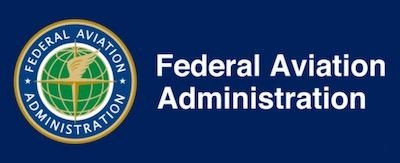Thu, May 16, 2019
Downgraded To Category 2 Due To Regulatory Issues
The FAA has determined that the Republic of Costa Rica does not comply with International Civil Aviation Organization (ICAO) safety standards and has been assigned a Category 2 rating based on a reassessment of the country’s civil aviation authority.

A Category 2 International Aviation Safety Assessment (IASA) rating means the country either lacks laws or regulations necessary to oversee air carriers in accordance with minimum international standards, or its civil aviation authority – a body equivalent to the FAA for aviation safety matters – is deficient in one or more areas, such as technical expertise, trained personnel, record-keeping, or inspection procedures. With a Category 2 rating, Costa Rica’s carriers can continue existing service to the United States. They will not be allowed to establish new service to the United States.
In 1996, Costa Rica was assigned an initial Category 1 rating, meaning the country’s Direccion General de Aviacion Civil (DGAC) complied with ICAO standards for aviation safety oversight. The FAA conducted an in-country reassessment of Costa Rica under the IASA program in October 2018, and met with the DGAC in February 2019 to discuss the results.
As part of the FAA’s IASA program, the agency assesses the civil aviation authorities of all countries with air carriers that have applied to fly to the United States, currently conduct operations to the United States, or participate in code-sharing arrangements with U.S. partner airlines, and makes that information available to the public. The assessments determine whether or not foreign civil aviation authorities are meeting ICAO safety standards, not FAA regulations.
A Category 1 rating means the country’s civil aviation authority complies with ICAO standards. With an IASA Category 1 rating, a country’s air carriers can establish service to the United States and carry the code of U.S. carriers. In order to maintain a Category 1 rating, a country must adhere to the safety standards of ICAO, the United Nations’ technical agency for aviation that establishes international standards and recommended practices for aircraft operations and maintenance.
(Source: FAA)
More News
He Attempted To Restart The Engine Three Times. On The Third Restart Attempt, He Noticed That Flames Were Coming Out From The Right Wing Near The Fuel Cap Analysis: The pilot repor>[...]
Make Sure You NEVER Miss A New Story From Aero-News Network Do you ever feel like you never see posts from a certain person or page on Facebook or Instagram? Here’s how you c>[...]
From 2009 (YouTube Edition): Leading Air Show Performers Give Their Best Advice for Newcomers On December 6th through December 9th, the Paris Las Vegas Hotel hosted over 1,500 air >[...]
Aero Linx: NASA ASRS ASRS captures confidential reports, analyzes the resulting aviation safety data, and disseminates vital information to the aviation community. The ASRS is an i>[...]
“For our inaugural Pylon Racing Seminar in Roswell, we were thrilled to certify 60 pilots across our six closed-course pylon race classes. Not only did this year’s PRS >[...]
 NTSB Final Report: Rutan Long-EZ
NTSB Final Report: Rutan Long-EZ ANN FAQ: Turn On Post Notifications
ANN FAQ: Turn On Post Notifications Classic Aero-TV: ICAS Perspectives - Advice for New Air Show Performers
Classic Aero-TV: ICAS Perspectives - Advice for New Air Show Performers ANN's Daily Aero-Linx (06.28.25)
ANN's Daily Aero-Linx (06.28.25) Aero-News: Quote of the Day (06.28.25)
Aero-News: Quote of the Day (06.28.25)



